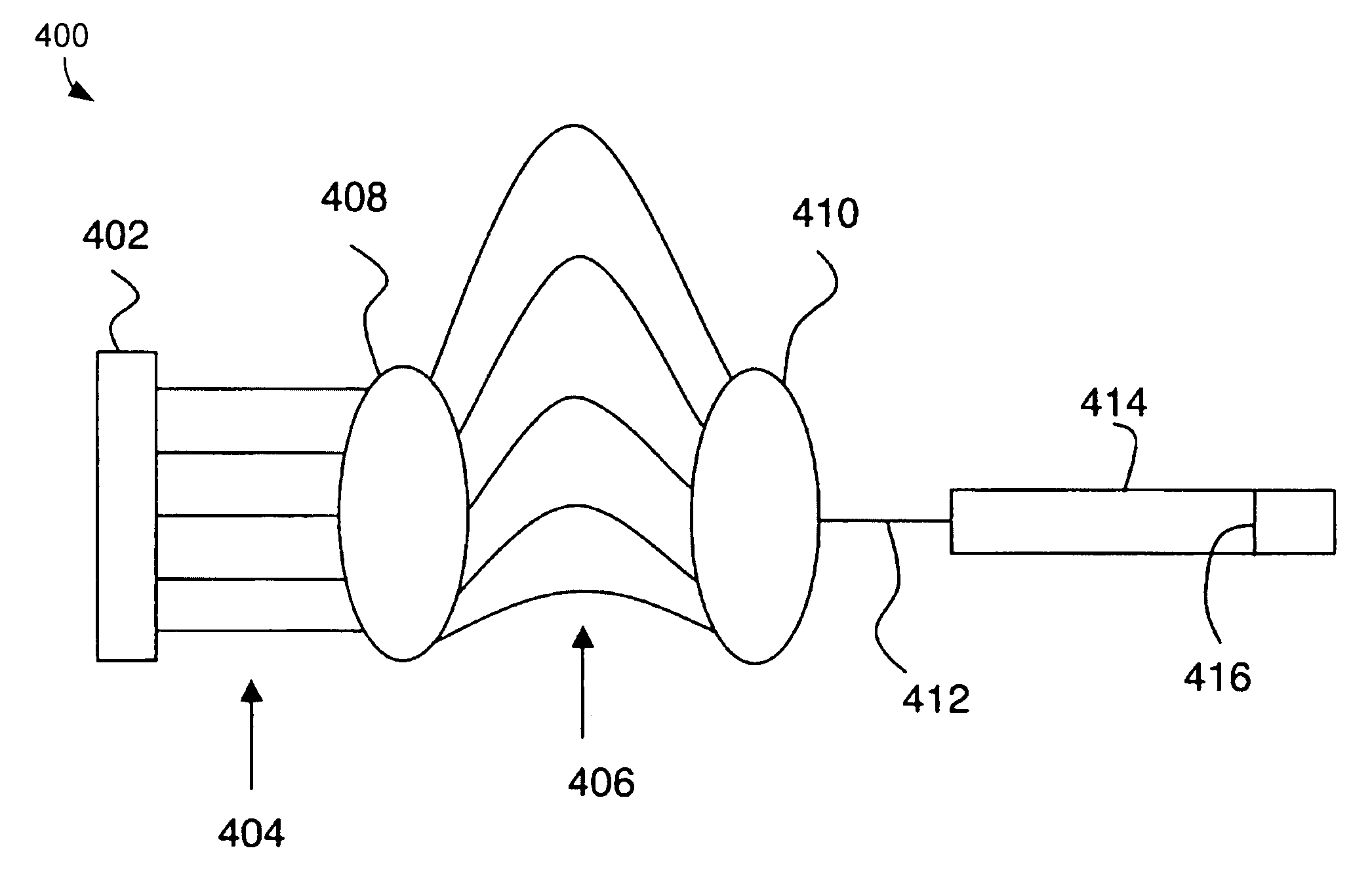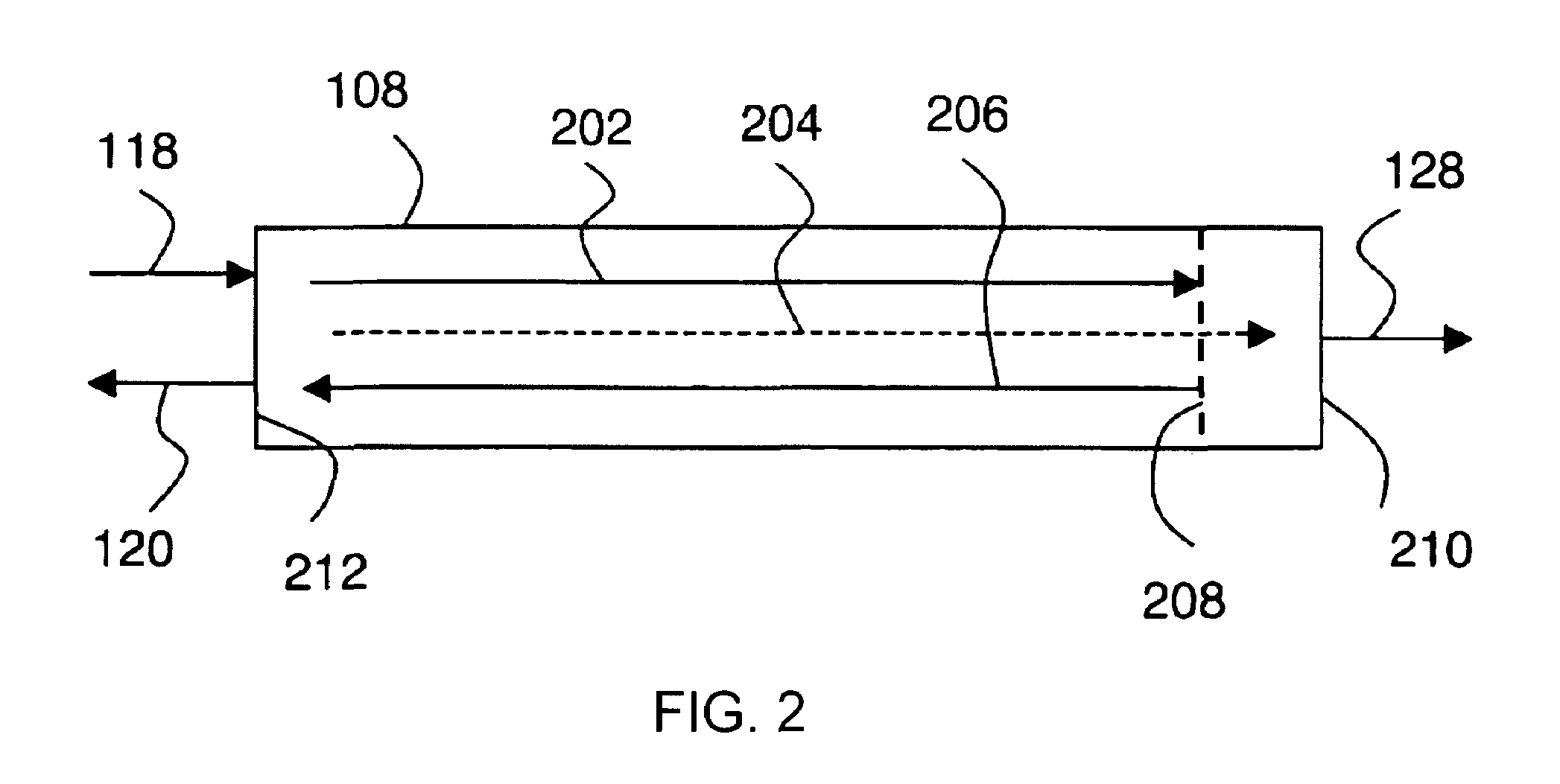Illumination module
a technology of illumination module and light source, which is applied in the direction of instruments, optical elements, optical waveguide light guides, etc., can solve the problems of cost, interference between optical inputs, and inability to provide lasers with emission wavelengths within the specified range,
- Summary
- Abstract
- Description
- Claims
- Application Information
AI Technical Summary
Benefits of technology
Problems solved by technology
Method used
Image
Examples
Embodiment Construction
[0028]An illumination module using wavelength combining and nonlinear frequency conversion with nonlinear feedback to the source provides a source of high-brightness, long-life, speckle-reduced or speckle-free light. Various embodiments of the invention may provide light in a plurality of colors including Red-Green-Blue (RGB) light and / or white light. The light from the illumination module may be directed to a 3LCD system, a Digital Light Processing (DLP®) system, a Liquid Crystal on Silicon (LCoS) system, or other micro-display or micro-projection systems.
[0029]Power is obtained from within a wavelength conversion device and fed back to the source. The feedback power has a nonlinear dependence on the input power provided by the source to the wavelength conversion device. Nonlinear feedback may reduce the sensitivity of the output power from the wavelength conversion device to variations in the nonlinear coefficients of the device because the feedback power increases if a nonlinear ...
PUM
| Property | Measurement | Unit |
|---|---|---|
| wavelength | aaaaa | aaaaa |
| wavelength | aaaaa | aaaaa |
| wavelength | aaaaa | aaaaa |
Abstract
Description
Claims
Application Information
 Login to View More
Login to View More - R&D
- Intellectual Property
- Life Sciences
- Materials
- Tech Scout
- Unparalleled Data Quality
- Higher Quality Content
- 60% Fewer Hallucinations
Browse by: Latest US Patents, China's latest patents, Technical Efficacy Thesaurus, Application Domain, Technology Topic, Popular Technical Reports.
© 2025 PatSnap. All rights reserved.Legal|Privacy policy|Modern Slavery Act Transparency Statement|Sitemap|About US| Contact US: help@patsnap.com



